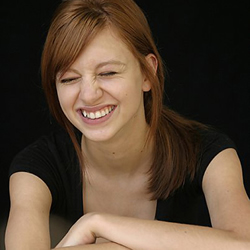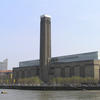More about Sunflower Seeds
- All
- Info
- Shop

Sr. Editor
Hungry visitors to the Tate a couple of years ago may have thought they found a proverbial gold mine in Ai Weiwei’s sculptural installation Sunflower Seeds.
I hope no one broke a tooth, because though the floor of the exhibition looked like a bodega exploded with tasty treats, the little guys that covered almost 11,000 square feet of the museum are actually painted porcelain. What looks like a trucker’s paradise, in reality, holds a more complicated significance.
Ai Weiwei, famous for being imprisoned after harsh criticism of the Chinese government, imbues all his work with his political perspective. Specifically, he is interested in exploring Chinese identity, both socially and on a global economic scale. Sunflower Seeds is in part a reference to former Chairman Mao Zedong, who converted the country to a system of Communism in 1949. The egotistical leader referred to himself as the sun and the people of China as his sunflower seeds. Though his reign brought industrial modernization to China -or the People’s Republic as it’s now called- it was at the cost of the Chinese citizens’ wellbeing.
Millions starved to death during the Chairman’s “Cultural Revolution,” a movement intended to eradicate any capitalist or culturally traditional elements from society. It was not only economically devastating but also begat a government where individuals are still not allowed to express dissent- the kind of censorship that Ai Weiwei understands all too well after his time behind bars. The vast number of seeds is then a reference to the millions of Chinese citizens. Though the government encourages uniformity and compliance, the seeds in this metaphor are all actually handcrafted and painted, thus reaffirming individuality.
Factory labor is another hot button issue in China that this piece takes on. Ai Weiwei hired 1600 artisans to create the seeds over the course of 2 years. Unlike the horrifying conditions of other factories based there (ahem, Apple), they were paid fair wages and were allowed to work in groups and from home, as a community. It sounds pretty good, but the artist has been criticized seeing as how he profited so much from the sale of the seeds. The Tate bought a big pile of them after the exhibit, to the tune of an estimated $43 million. Not exactly 7-11 prices, right?
Originally, visitors were allowed to walk on the sea of seeds. Some pictures even show tourists lying in piles of them, Scrooge McDuck style. Turns out breathing porcelain dust is hazardous to your health, so now they show them in a big, conical pile. Whatever you think of the ethics surrounding the work's creation, Sunflower Seeds definitely gets at some important issues surrounding contemporary Chinese culture. As a Westerner, it makes me want to dive in, crack a shell and learn more about what’s underneath.
Featured Content
Here is what Wikipedia says about Sunflower Seeds (artwork)
Kui Hua Zi (Sunflower Seeds) is an art installation created by contemporary artist and political activist Ai Weiwei. It was first exhibited at the Tate Modern art gallery in London from 12 October 2010 to 2 May 2011. The work consisted of one hundred million individually hand-crafted porcelain sunflower seeds which filled the gallery's 1,000 square metre Turbine Hall to depth of ten centimetres.
Viewers were originally able to interact and walk across the sunflower seeds, but after the Tate Modern Museum feared that the dust emitted from the installation could be harmful, they fenced it off. Smaller collections of the seeds have been exhibited in twelve museums and galleries across the world from 2009 to 2013.
Check out the full Wikipedia article about Sunflower Seeds (artwork)



















Incredible how much labor must have gone into that